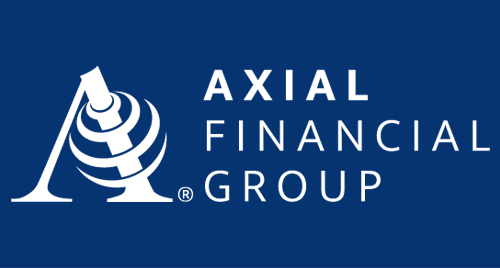Market Update—Week of August 5, 2024
Presented by Axial Financial Group
-
Technology and small-caps moved sharply lower on softening earnings outlook and U.S. economic data. Bonds rallied sharply as investors flocked to safe haven assets amid potentially slowing U.S. growth.
Quick Hits
- Report releases: Hiring slowed notably in July as the unemployment rate rose to a two- year high.
2. Financial market data: Small-caps and tech stocks fell on U.S. growth concerns.
3. Looking ahead: This week will be light: Institute for Supply Management (ISM) data and the international trade balance will be the two major releases.
Keep reading for an in-depth look.
Report Releases—July 29–August 2, 2024
Conference Board Consumer Confidence Index: July (Tuesday)
Consumer confidence improved more than expected in July, due to improving consumer expectations for future economic conditions.
- Expected/prior month consumer confidence: 99.7/97.8
- Actual consumer confidence: 100.3
(30-50 words) Federal Open Market Committee (FOMC) Rate Decision: July (Wednesday)
As expected, the Federal Reserve (Fed) left the federal funds rate unchanged after its July meeting. Fed chair Jerome Powell indicated in his post-meeting news conference that the central bank may consider cutting interest rates at its next meeting in September, depending on economic conditions.
(30-50 words) ISM Manufacturing Index: July (Monday)
Manufacturer confidence fell more than expected in July, due in part to a notable drop in manufacturer hiring. The index sits at its lowest level since November 2023, signaling headwinds for the manufacturing industry.- Expected/prior ISM Manufacturing index: 48.8/48.5
- Actual ISM Manufacturing index: 46.8
(30-50 words) Employment Report: July (Friday)
Hiring continued to slow in July; 114,000 jobs were added against calls for 175,000. The unemployment rate unexpectedly rose to 4.3 percent during the month, its highest level in more than two years.
- Expected/prior change in nonfarm payrolls: +175,000/+179,000
- Actual change in nonfarm payrolls: +114,000
The Takeaway
- Consumer confidence improved in July, with those surveyed expecting an improvement in future conditions.
- Manufacturing and employment were both lower than expected.
Financial Market Data
Equity
Index
Week-to-Date
Month-to-Date
Year-to-Date
12-Month
S&P 500
–2.05%
–3.18%
12.99%
20.24%
Nasdaq Composite
–3.34%
–4.68%
12.20%
20.98%
DJIA
–2.10%
–2.71%
6.56%
14.94%
MSCI EAFE
–1.96%
–3.77%
4.35%
10.12%
MSCI Emerging Markets
–1.00%
–2.16%
5.48%
6.69%
Russell 2000
–6.66%
–6.43%
4.86%
8.87%
Source: Bloomberg, as of August 2, 2024
The equity markets took a decidedly risk-off stance. The Russell 2000 and Nasdaq indices were down more than 6.6 percent and 3.3 percent, respectively. Equities moved lower for several reasons, including a tough week of earnings for some of the large names. Amazon provided soft third-quarter earnings guidance and Microsoft saw slower-than-expected cloud growth. Meta Platforms was a standout. Other areas of concern included a significant miss on Friday’s employment report, rising Middle East tensions, and a strengthening Japanese yen.
Fixed Income
Index
Month-to-Date
Year-to-Date
12-Month
U.S. Broad Market
1.58%
3.21%
7.69%
U.S. Treasury
1.70%
3.03%
6.63%
U.S. Mortgages
1.81%
3.48%
7.91%
Municipal Bond
0.95%
1.46%
5.46%
Source: Bloomberg, as of August 2, 2024
The yield curve continued its plunge lower, with Treasuries between 2-year and 10-year (often referred to as “the belly”) seeing the largest impact. The 2-, 5-, and 10-year maturities fell 52 basis points (bps), 46 bps, and 40 bps, respectively, closing at 3.87 percent, 3.62 percent, and 3.8 percent.
The Takeaway
- Equities took a major risk-off approach, as softer data led to concerns over a slowing U.S. economy.
- Bonds posted a sharp rally on this risk-off mood. The 10-year closed the week below 4 percent for the first time since May 2023.
Looking Ahead
This week will be lighter in terms of economic data and events.
- The week kicks off on Monday with the release of the S&P Global Purchasing Managers’ Index (PMI) final U.S. PMI figure and ISM Services index for July. The S&P Global U.S. Composite PMI will provide an indication of the state of the U.S. economy. The prior month came in at 55, which indicates the economy is still firmly in expansionary territory. The ISM Services index is expected to be 51.3, up from 48.8 in June.
- On Tuesday, we expect the release of the international trade balance for June. The trade deficit is expected to shrink for the first time in three months.
- Finally, on Thursday afternoon, Richmond Fed President Tom Barkin will speak. We’ll look to gauge what the Fed’s thoughts are after a soft jobs report and market volatility.
- Report releases: Hiring slowed notably in July as the unemployment rate rose to a two- year high.
© 2024 Commonwealth Financial Network®
© Axial Financial Group. All Rights reserved. 1 Van de Graaff Drive, Suite 500, Burlington, Massachusetts. 781.273.1400
Disclosures: Certain sections of this commentary contain forward-looking statements that are based on our reasonable expectations, estimates, projections, and assumptions. Forward-looking statements are not guarantees of future performance and involve certain risks and uncertainties, which are difficult to predict. All indices are unmanaged and are not available for direct investment by the public. Past performance is not indicative of future results. The S&P 500 is based on the average performance of the 500 industrial stocks monitored by Standard & Poor’s. The Nasdaq Composite Index measures the performance of all issues listed in the Nasdaq Stock Market, except for rights, warrants, units, and convertible debentures. The Dow Jones Industrial Average is computed by summing the prices of the stocks of 30 large companies and then dividing that total by an adjusted value, one which has been adjusted over the years to account for the effects of stock splits on the prices of the 30 companies. Dividends are reinvested to reflect the actual performance of the underlying securities. The MSCI EAFE Index is a float-adjusted market capitalization index designed to measure developed market equity performance, excluding the U.S. and Canada. The MSCI Emerging Markets Index is a market capitalization-weighted index composed of companies representative of the market structure of 26 emerging market countries in Europe, Latin America, and the Pacific Basin. The Russell 2000® Index measures the performance of the 2,000 smallest companies in the Russell 3000® Index. The Bloomberg US Aggregate Bond Index is an unmanaged market value-weighted performance benchmark for investment-grade fixed-rate debt issues, including government, corporate, asset-backed, and mortgage-backed securities with maturities of at least one year. The U.S. Treasury Index is based on the auctions of U.S. Treasury bills, or on the U.S. Treasury’s daily yield curve. The Bloomberg US Mortgage Backed Securities (MBS) Index is an unmanaged market value-weighted index of 15- and 30-year fixed-rate securities backed by mortgage pools of the Government National Mortgage Association (GNMA), Federal National Mortgage Association (Fannie Mae), and the Federal Home Loan Mortgage Corporation (FHLMC), and balloon mortgages with fixed-rate coupons. The Bloomberg US Municipal Index includes investment-grade, tax-exempt, and fixed-rate bonds with long-term maturities (greater than 2 years) selected from issues larger than $50 million. Basis points (bps) is a common unit of measure for interest rates and other percentages in finance. One basis point is equal to 1/100th of 1 percent, or 0.01 percent.




